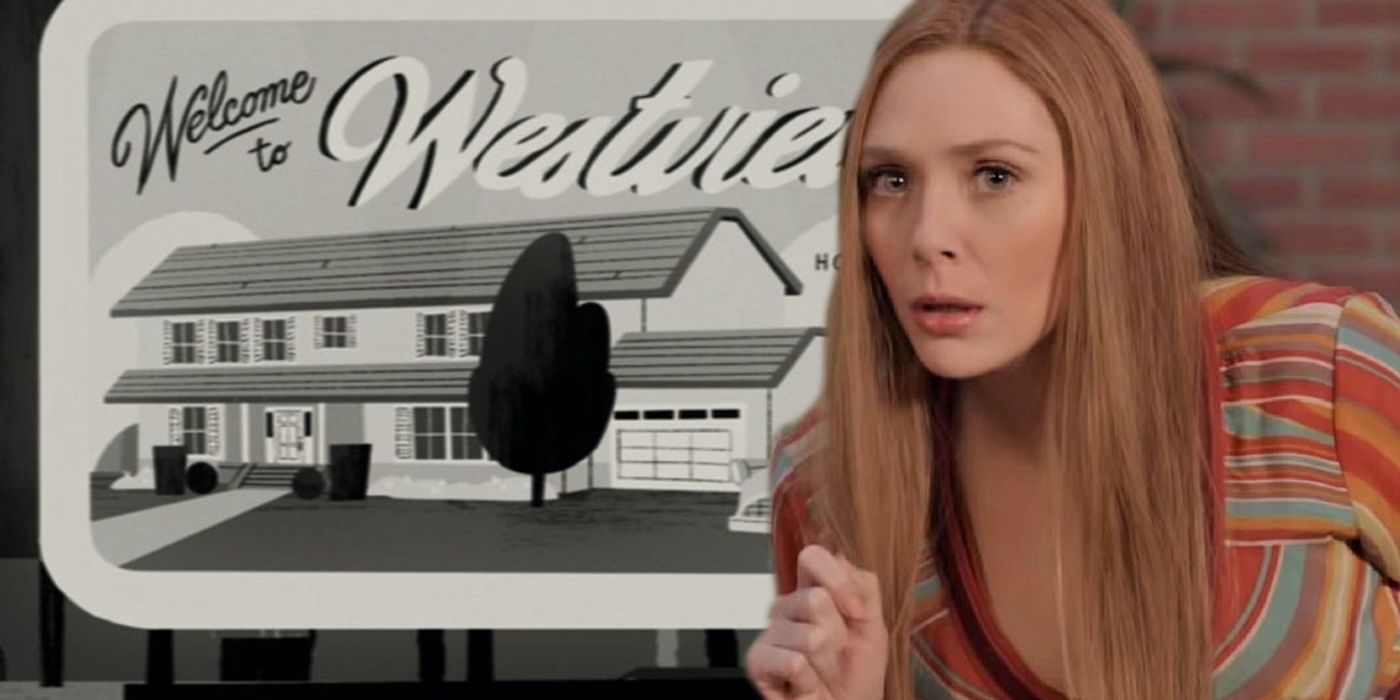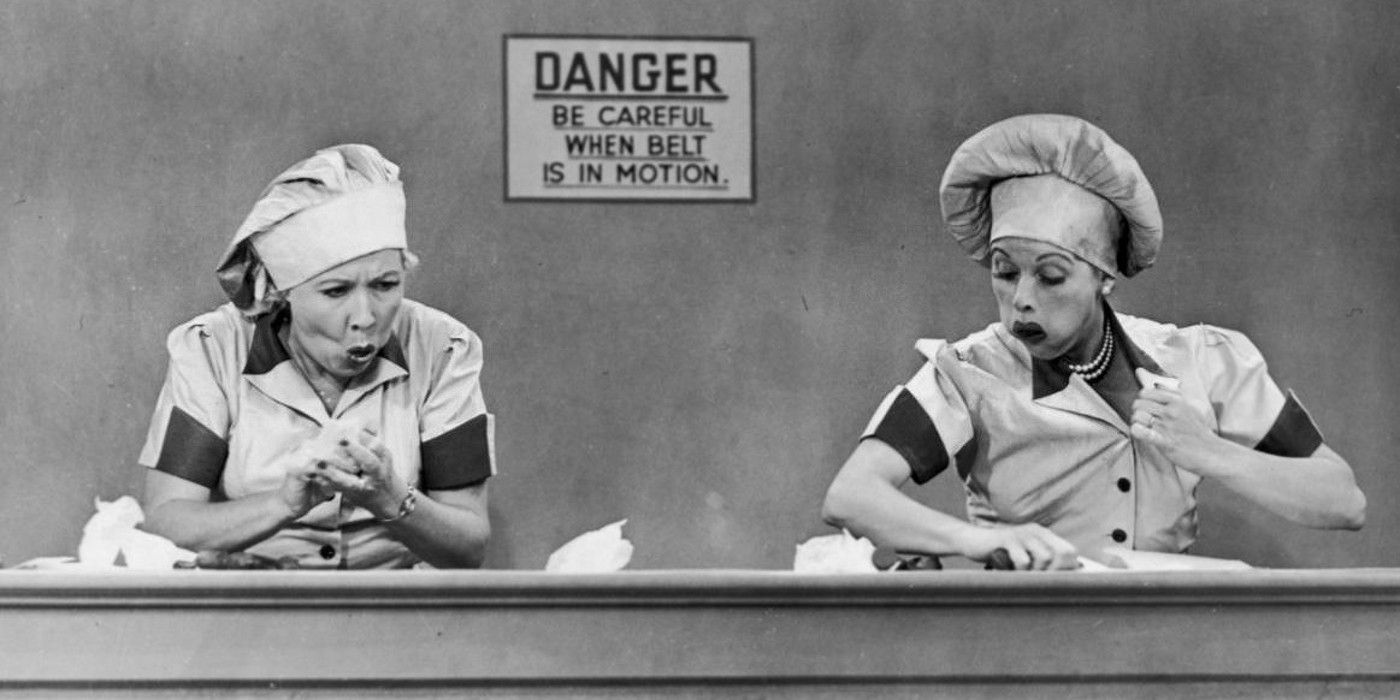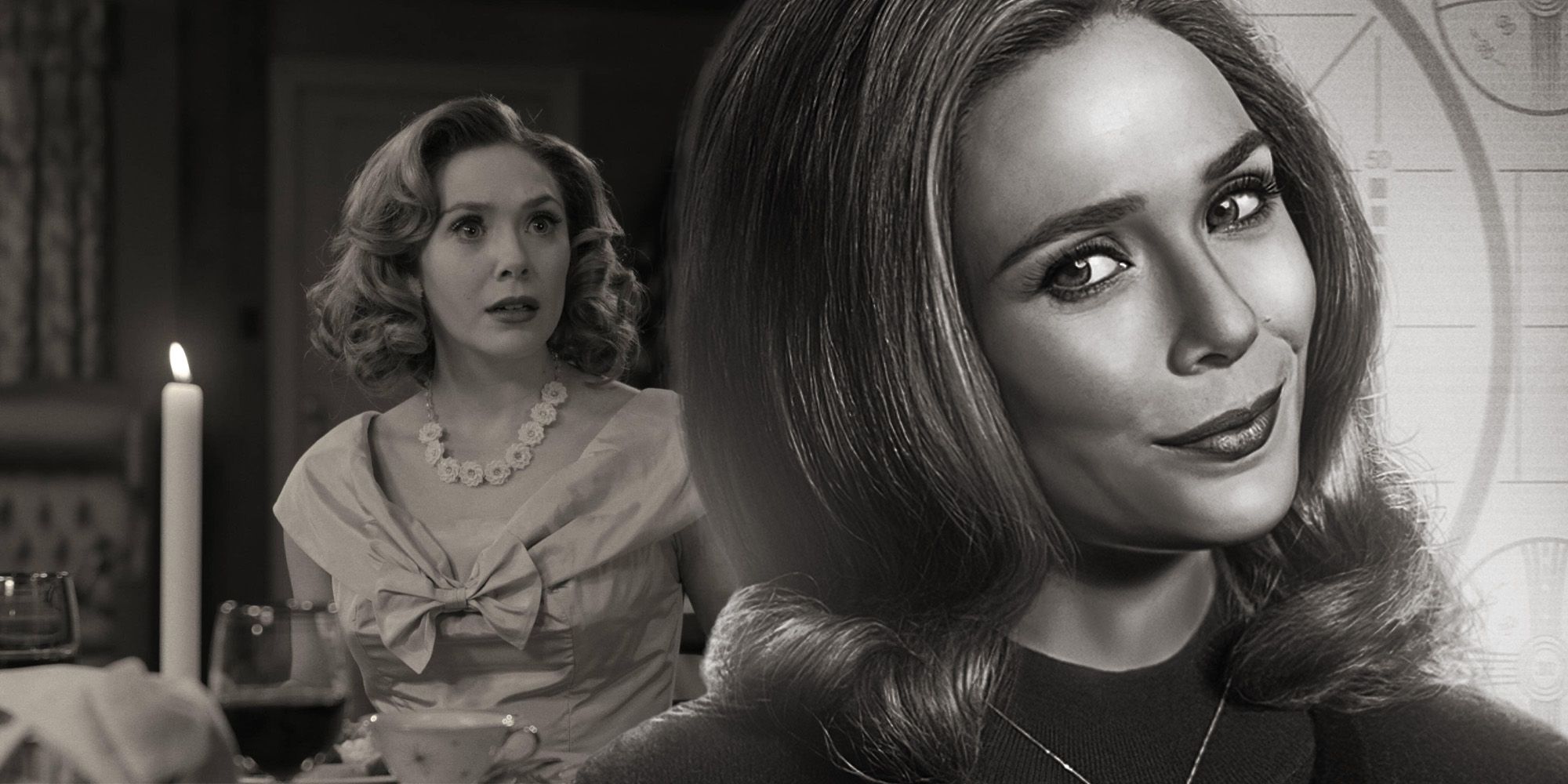WARNING: The following contains SPOILERS for WandaVision episode 3, "Now In Color."
The first Disney+ MCU series WandaVision parodies various sitcoms — and the shows it references hint that a woman is controlling Westview (and not Scarlet Witch). The Marvel series follows the married life of Wanda Maximoff (Elizabeth Olsen) and Vision (Paul Bettany), living in Westview, a mysterious "perfect" alternate reality that is inspired by classic TV shows like I Love Lucy and Bewitched. The nature of Westview remains unknown, but clues suggest Wanda is not in complete control of her surroundings, and — based on the sitcoms it imitates — Westview is likely controlled by some other woman.
WandaVision season 1, episode 3, "Now In Color" continues the trend of modelling Westview on classic TV sitcoms, which are gradually progressing chronologically. The first episode, appearing to be set in the '50s, was a clear analog for I Love Lucy, with Wanda standing in for Lucille Ball's titular character and Vision filling the role of Desi Arnaz/Ricky Ricardo. Episode 2 saw the set change to the '60s, complete with an animated intro in the style of shows from the decade: Bewitched, I Dream of Jeanie, and The Jetsons.
WandaVision episode 3 brings the series into the '70s, combining elements of shows like The Brady Bunch and The Mary Tyler Moore Show, with the latter being the more dominant influence (particularly in the theme sequence). Like I Love Lucy and Bewitched, The Mary Tyler Moore show was a groundbreaking series: it was rooted in the second-wave feminist movement, and tackled issues like equal-pay in the workplace, infertility and even addiction. For its first three episodes, WandaVision has focused on parodying sitcoms known for having complex female leads and telling their stories; this suggests that ultimately, whoever created Westview is not only familiar with American popular culture, but is also someone with a vested interest in a world that prioritizes female-centric storytelling: most likely a woman.
WandaVision References Feminist Sitcoms
Of all the shows WandaVision could have referenced, its initial parody was a clear imitation of I Love Lucy: not just one of the most iconic, groundbreaking television series of all time, but one that was created and produced by a female trailblazer, Lucille Ball. Ball and her then husband Desi Arnaz formed an independent television production company Desilu Productions, that would go on to launch other significant television programs like Star Trek and The Untouchables. Ball eventually became the president of the company: an industry first, making her one of Hollywood's most powerful women.
The shows I Love Lucy, Bewitched, and The Mary Tyler Moore Show all place their female leads in a position of power in the home sphere, even when adopting typical domestic roles. Lucy is a lovable, hillarious, fully-developed character who confidently forges her own path — often to her own detriment. Samantha, the witch on Bewitched, and her meddling mother Endora posses a power that the husband Darrin lacks — and they are independent and empowered. This is in contrast to Jeanie from I Dream of Jeannie, who assumes a subservient role with Tony, her literal master. In both I Love Lucy and Bewitched, the husband is unafraid to look foolish, and the woman is often in control of (or the cause of) the situation.
The Mary Tyler Moore Show is a departure from the domestic format, as its central theme is a woman in her 30s who can "make it on her own" — but, like Wanda, Mary is learning to forge her own path in a world she doesn't totally understand. Mary is sweet but smart, and isn't afraid to voice her opinions in the male-dominated workplace. She often acts as the voice of reason, and is a respected member of the team. Most significantly, The Mary Tyler Moore Show is regarded as a TV series that changed history, since it ushered in an age of more realistic storylines and content on television. Given the events in WandaVision episode 3, this seems appropriate, as the real world appears to be gradually seeping into Westview.
WandaVision's Parodies Hint At Westview's Creator
So far in WandaVision, Wanda's characterization has aligned most to the female leads in the aforementioned sitcoms. This is particularly true in episode 2: Vision accidentally consumes a piece of bubblegum, which causes him to act inebriated, leaving Wanda to save the magic act. Wanda's not a simple domestic goddess like the mothers in other, comedies from the period, such June Cleaver in Leave It To Beaver or even Carol Brady from The Brady Bunch. Nor is Wanda a ditz or push-over like the sweet but dim Edith Bunker in All In The Family. Unlike those women, Wanda's often in control: she has the power to change her environment, she appears capable — and willing — to manipulate Vision, and she is largely the focus of the show. This has led many to assume that Scarlet Witch has created Westview — but there's just as much evidence that some other woman is behind the fake reality.
A common criticism of WandaVision is that there's a logical inconsistency in the premise: if Wanda grew up in Sokovia, why is her idea of a "perfect" married life based on American sitcoms? The simplest answer is that it's not: this isn't her idea at all. Throughout WandaVision, Wanda acts as though she doesn't fully understand her surroundings, or why things are happening when they do. She was happy to be pregnant, but did not actively manifest it (indicated by her surprise and disbelief). She has some magical abilities in this world, including the ability to "rewind" time when something upsets her, but her powers are limited. In WandaVision episode 3, for example, she is unable to remove the live stork. She also struggled to make dinner in episode 1, and then depended on Vision to revive his boss rather than use her powers to remove the food he was choking on. In season 2, Wanda heard a voice on the radio, asking who's doing this to her — further evidence that, at least as far as SWORD is concerned, Wanda's not responsible for the Westview reality.
Since the sitcoms that Westview is based on have in common a strong female voice, and since the most self-aware characters so far have all been female (apart from Vision — but he has also been "adjusted" by Wanda more than once) it's likely that a woman is in control: someone who would have an understanding of American pop culture. Some theories suggest the neighbor Agnes is Agatha Harkness, a witch from the comics, and that she is somehow responsible, but her scenes in episode 3 suggest that's not the case. The commercials and introductions in WandaVision imply that someone is watching Wanda and Vision in their new, fabricated, life (the hexagon motif hints that AIM could be involved). Perhaps whoever is responsible has yet to be introduced — because they're busy watching the action from the safety of their living room.



